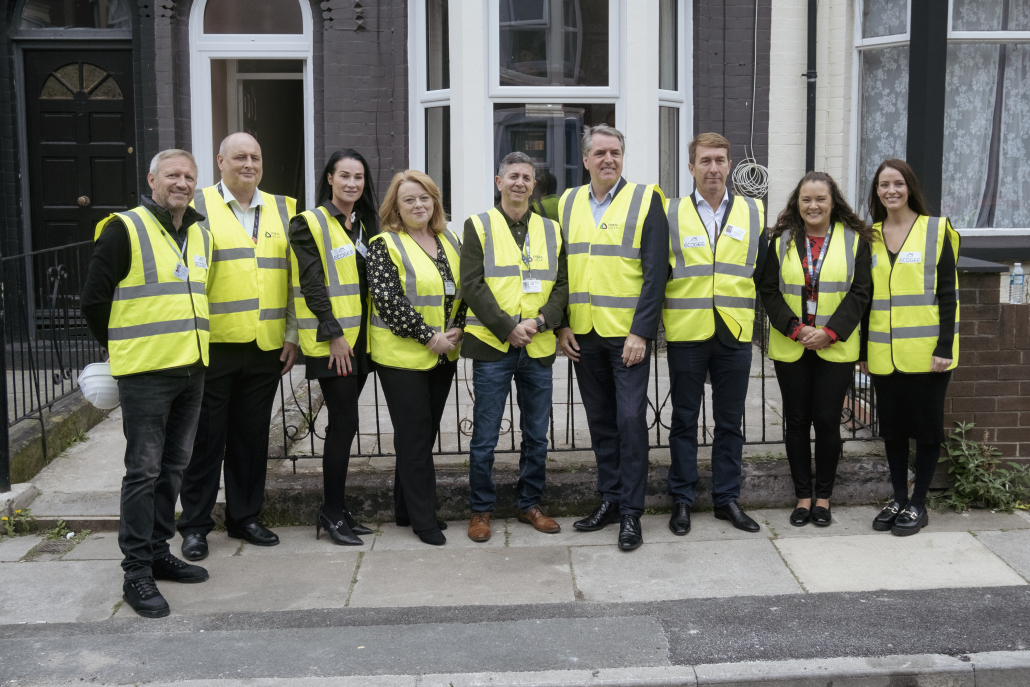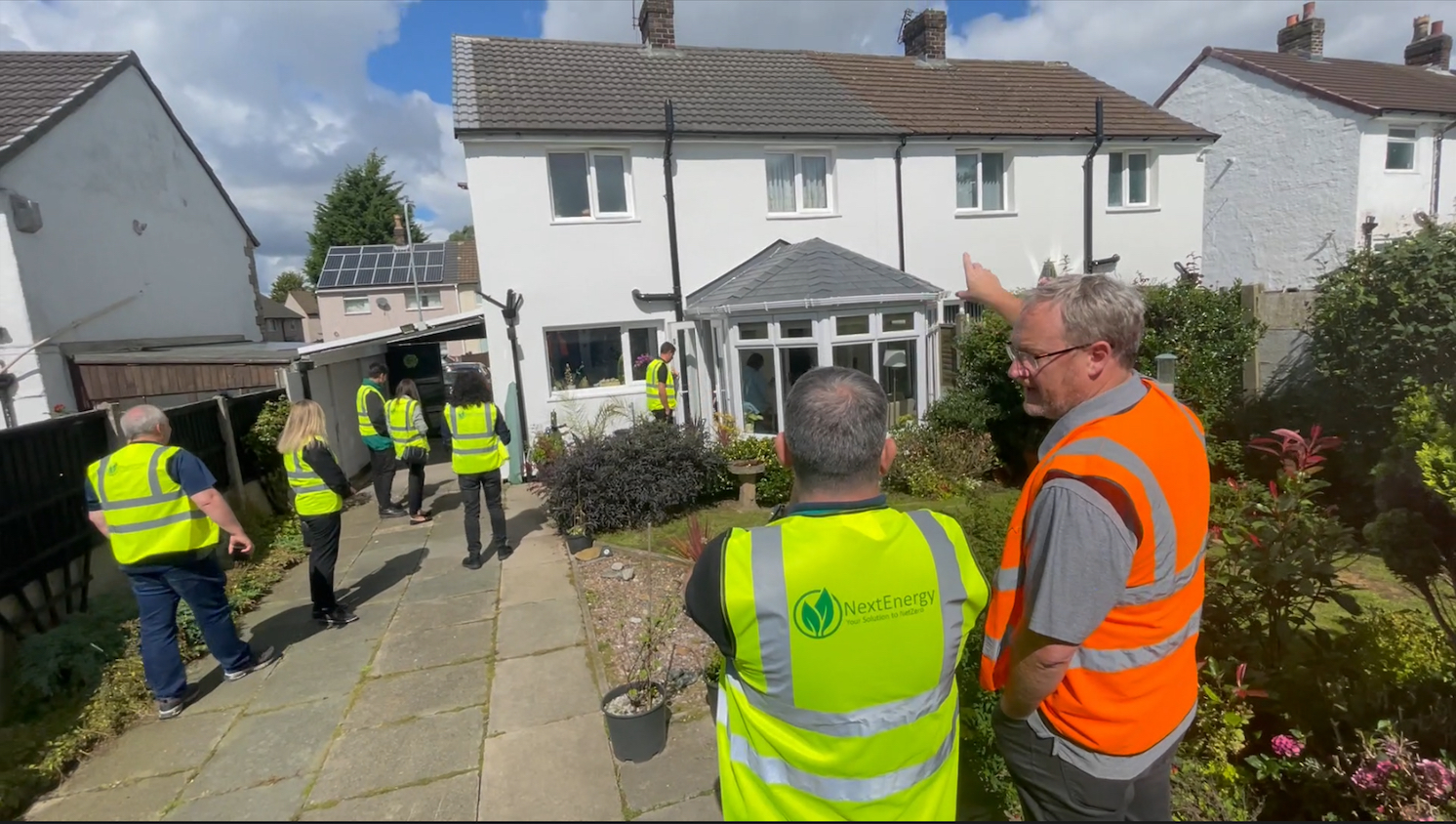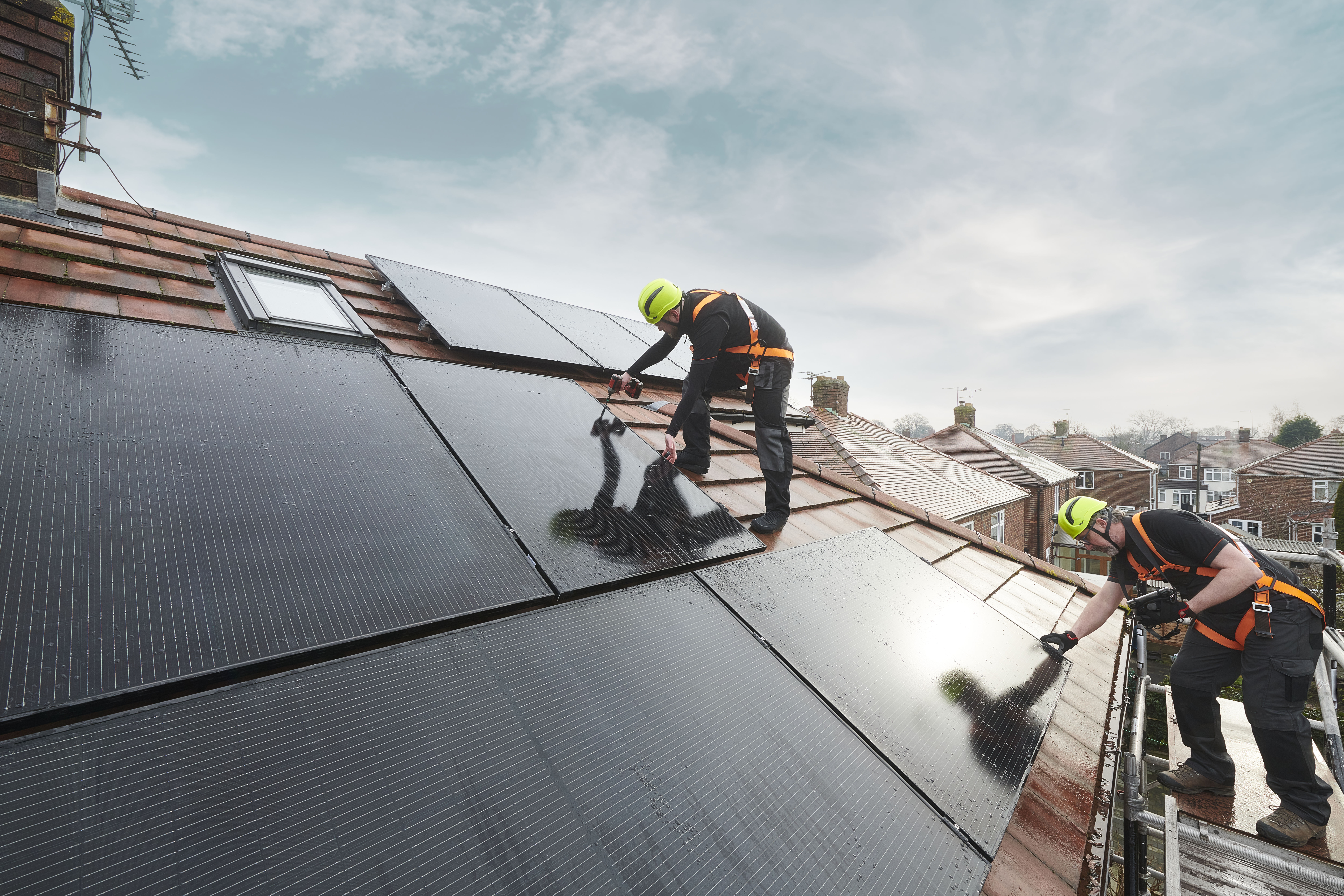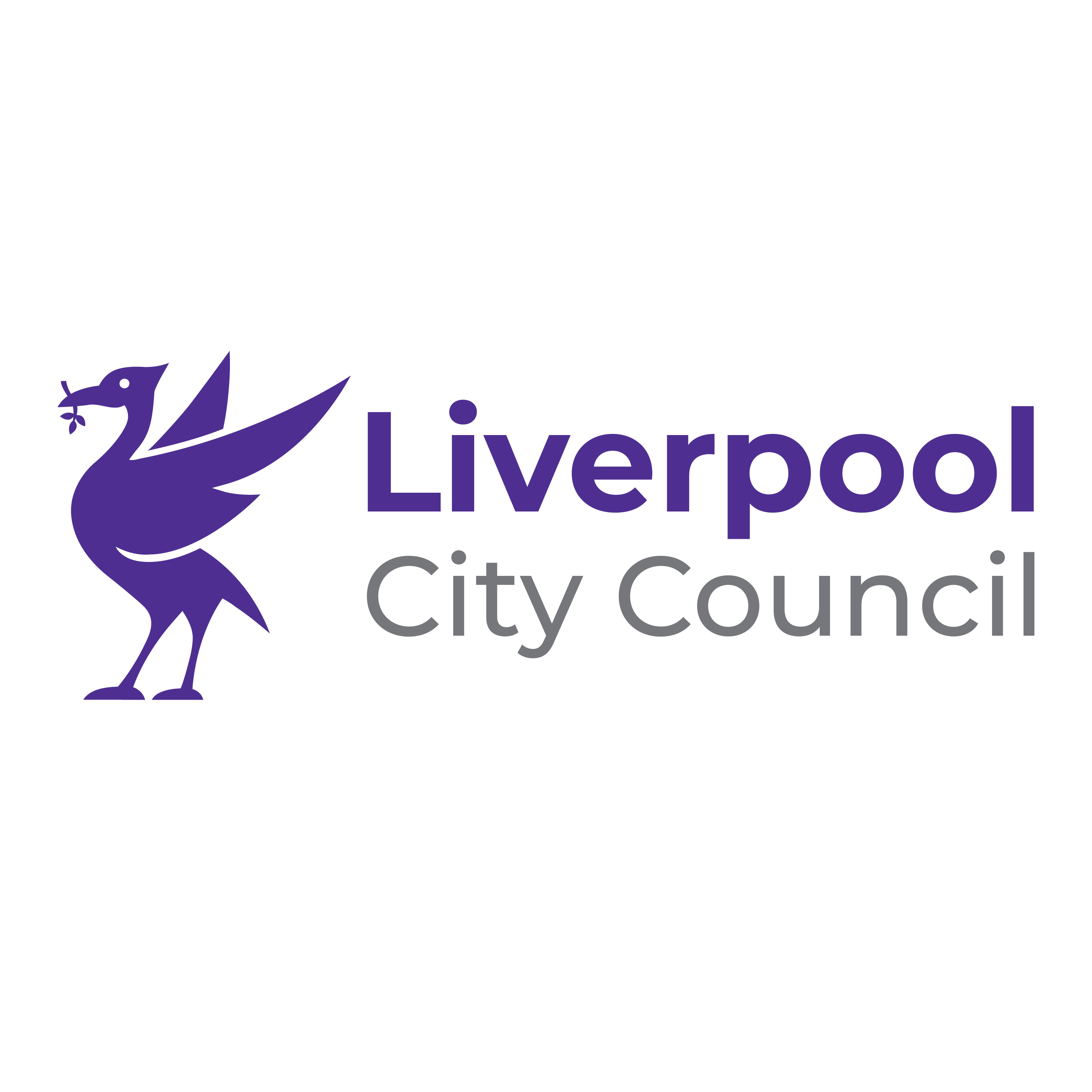Housing Retrofit
Saving energy, keeping homes warmer, cutting costs and reducing carbon emissions.

What is retrofit?
Retrofit is the process of making changes to an existing home to improve its energy performance, through adding measures such as insulation to the property, or by installing a low-carbon heating system. The aims are to save energy, keep homes warmer, cut carbon emissions and ease fuel costs.
Image credit: Next Energy

Benefits of retrofit
Retrofit solutions explained
As part of retrofitting your property, a retrofit assessor will survey your property and produce a list of retrofit measures that are needed to bring your home up to an energy efficient standard. Learn more about the key terms below to better understand some of the retrofit measures that may be proposed to improve your property:
- Air Source Heat Pumps
- Cavity Wall insulation
- Ground Source Heat Pumps
- Solar Panels PV
- Internal Wall Insulation
- External Wall Insulation
- Roof/Loft Insulation
All content has been kindly provided by Energy Saving Trust.
Retrofit Funding Programmes
The Combined Authority has already bid for and won £105m in government funding to support low-income households by retrofitting around 10,000 properties with energy efficient measures, including external wall insulation, roof insulation, heat pumps and solar panels. So far, nearly 6,000 properties have been completed.
We are committed to securing further funding wherever possible to expand the retrofit programme to benefit as many households across the city region as we can.
We deliver our retrofit programmes in partnership with Registered Providers of Social Housing, our six Local Authorities and installers, to improve the energy performance of homes across tenures and boroughs. Funding prioritises low-income households living in homes with the lowest energy performance so that those most in need are most likely to benefit.

Current funding programmes
Social Housing Decarbonisation Fund (SHDF) Wave 2.1
The Combined Authority obtained grant funding from the Department of Energy Security and Net Zero (DESNZ) to deliver SHDF Wave 2.1. Delivery commenced in 2023 and will conclude March 2025. The Combined Authority has led a consortium of 14 Registered Providers of Social Housing to deliver energy improvements to social homes in the City Region. This follows delivery of SHDF Wave 1 by the Combined Authority (see previous funding programmes below).
Funding is targeted at social homes with an Energy Performance Certificate (EPC) of band D-G with the aims of improving their energy performance to EPC band C, reducing reliance on fossil fuel heating, and easing fuel costs for tenants.
Registered Providers determine which of their homes to include in SHDF, which measures are suitable for installation and which contractors to appoint to provide retrofit assessment, design, coordination, and installation services. If you are a social housing tenant, please contact your provider directly to enquire about participation.
The Combined Authority is currently working with Registered Providers in the City Region to prepare for future Waves of SHDF.
Public Sector Buildings Decarbonisation Scheme (PSDS)
The Department for Energy Security and Net Zero (DESNZ) provides grants for public sector bodies to fund heat decarbonisation and energy efficient measures in public sector buildings under the Public Sector Buildings Decarbonisation Scheme (PSDS). It supports the aim of reducing emissions from public sector buildings by 75% by 2037, compared to a 2017 baseline.
For more information, visit: Phase 3c Public Sector Decarbonisation Scheme | Salix Finance
The Combined Authority has been successful in receiving £5.4M funding from Phase 3c of the funding round, and has collaborated with local authorities across the region to identify the buildings that will have the energy efficient measures installed:
- Georges Dock
- Cunard Building
- Wirral Country Park
- Landican Cemetery
- Netherton Activity Centre
- Prescot Soccer Centre
- Earlestown Town Hall
Closed Funding Programmes – work we’ve finished
Home Upgrade Grant 2 (HUG 2)
The Combined Authority has obtained grant funding from the Department of Energy Security and Net Zero (DESNZ) to deliver HUG2 (Home Upgrade Grant 2). Delivery commenced in 2023 and will conclude in March 2025. This follows delivery of HUG1 by the Combined Authority (see previous funding programmes below).
Funding is targeted at privately-owned (owner-occupied and privately rented) homes with an Energy Performance Certificate (EPC) of band D-G that are not heated by mains gas. Eligibility criteria is set by Central Government and prioritises low-income households. Funding is available to install fabric measures such as loft, underfloor, cavity wall, external wall and internal wall insulation, and low carbon heating systems such as air source heat pumps.
The programme aims to improve the energy performance of homes to EPC band C, reduce reliance on fossil fuel heating and ease fuel costs for residents.
The Combined Authority appointed Liverpool-based contractor Ecogee to provide retrofit assessment, design, coordination, and installation services.
To find out more and determine if you qualify for HUG2 funding, visit: Home Upgrade Grant Two | Liverpool City Region Combined Authority (liverpoolcityregion-ca.gov.uk).
The Combined Authority is not currently delivering any retrofit funding programmes targeted at privately-owned homes that are heated by mains gas. When Central Government makes further funding available for these homes, the Combined Authority will apply to deliver this and update this website to inform residents.
Solar Together
Solar Together is a collective purchasing scheme for solar photovoltaic (PV) panels and batteries. It is delivered in partnership with iChoosr who administer a reverse auction to achieve the best value for homeowners in the ‘able to pay’ or ‘self-funded’ market.
The first round of LCR Solar Together concluded in June 2023 with the three successful contractors delivering installations to 586 homes.The second round of Solar Together began in September 2023 and will conclude in June 2024. iChoosr awarded the delivery contract to Solar Bureau.
Please see case studies for stories and examples of installation.

Other help and information
Energy Performance Certificate Checker – If you would like to check the Energy Performance Certificate (EPC) for your property, you can do so for free on the Government Website: Find an energy certificate – GOV.UK (www.gov.uk)
Help with your energy bills – if you’re on benefits or have a low income, visit the Government website.
Energy Saving Tips – actions you can do to save energy and lower your bills – access immediate energy saving tips via the government website.
Independent Advice for All Households
Energy Projects Plus is an independent not-for-profit organisation and a registered environmental charity, working in partnership with the Liverpool City Region Combined Authority to provide support and advice to residents. For free advice call the Save Energy Advice Line on 0800 043 0151. Email: [email protected]
For more information Contact Us | Energy Projects Plus (epplus.org.uk)
North West Energy Projects
For information about energy projects across the wider North West visit our partners at the North West Net Zero Hub.
Local Authority Energy Efficiency Resources
Sign up
Join the list to be kept informed of any new grant funding that becomes available.
Retrofit solutions - explained
What is an air source heat pump?
An air source heat pump (sometimes referred to as an air-to-water heat pump) transfers heat from the outside air to water. This in turn heats rooms in your home via radiators or underfloor heating. It can also heat water stored in a hot water cylinder for your hot taps, showers, and baths.
How does an air source heat pump work?
Heat from the air is absorbed into a fluid. This fluid then passes through a heat exchanger into the heat pump, which raises the temperature and then transfers that heat to water.
What is Cavity Wall Insulation?
About a third of all the heat lost in an uninsulated home escapes through the walls. By properly insulating cavity walls, you will save energy and cut costs off your heating bill.
In general, houses built from the 1990s onwards have wall insulation to keep the heat in, but if your house is older than that, it may not have any wall insulation at all.
What is a ground source heat pump?
A ground source heat pump (also known as a ground-to-water heat pump) transfers heat from the ground outside your home to heat your radiators or underfloor heating. It can also heat water stored in a hot water cylinder, ready to use for your hot taps and showers.
How does a ground source heat pump work?
Thermal transfer fluid (TTF), sometimes known as ‘brine,’ is a mixture of water and antifreeze that flows around a loop of pipe buried in your garden or outdoor space. This loop could either be a long or coiled pipe buried in trenches, or a long loop (called a ‘probe’) inserted into a borehole.
Heat from the ground is absorbed into the brine, which then passes through a heat exchanger into the heat pump. This raises the temperature of the fluid and then transfers that heat to water.
What are solar panels?
Solar electricity panels, also known as photovoltaics (PV), capture the sun’s energy and convert it into electricity that you can use in your home.
By installing solar panels, you can generate your own renewable electricity.
How do solar panels work?
A solar PV panel consists of many cells made from layers of semi-conducting material, most commonly silicon. When light shines on this material, a flow of electricity is created.
The cells do not need direct sunlight to work and can even work on cloudy days. However, the stronger the sunshine, the more electricity generated.
What are the benefits of internal wall insulation?
Internal wall insulation offers a thermal insulation solution for properties where cavities cannot be filled, or external wall insulation cannot be used. Internal wall insulation can dramatically reduce the likelihood of condensation on internal wall surfaces.
Do internal walls need to be insulated?
Unfortunately, your home may not be offering an adequate barrier against heat loss, which usually means higher energy bills as you try to heat your home.
If you are looking to reduce heat loss and improve energy efficiency, upgrading your internal wall insulation is an excellent way to make long-term savings and improve the comfort of your home.
What Are the Benefits of External Wall Insulation?
If you are creating external wall insulation systems, you will get a lot of advantages beyond greater comfort and habitability. There are many more amazing benefits to external wall insulation including the following:
- Lower fuel bills: External wall insulation has many of the same benefits as internal wall insulation, the main benefit of which being less energy consumption – so you can lower your fuel bills.
- Less damp: Damp problems can affect any building, but insulation can help. A thick layer of insulation serves not only as a thermal warmer but also as a moisture barrier, which is great for mitigating the problems that can result from dampness.
- Environmentally friendly: Insulation materials will make a building more energy-efficient, which is good for the environment. You get cooler summers and warmer winters from external wall insulation, so it is good for all seasons.
What is Room in Roof Insulation?
Installing room in roof insulation involves insulation boarding being fitted in between the rafters underneath the existing plasterboard walls.
Room in roof insulation works by trapping heat within your home to create a blanket effect.
This allows you to maintain a warm home more easily without using as much energy to do so, saving you money on your energy bills.
Case Studies – examples of what we have installed and results
Careers in Retrofit
The Liverpool City Region Be More careers portal brings together opportunities from across the region. It is the one-stop shop for skills and career options in LCR, it caters for both local employers and people looking for learning opportunities including green skills. Here is some of the help and support that residents can find on the Be More website and app…
- Search for an apprenticeship vacancy to learn whilst earning money.
- Find free internet access and digital equipment and support to help with training and employment.
- Enrol on a Skills Bootcamp to build your CV and fast track to an interview.
- Search local job vacancies in LCR’s growth sectors.
- Receive 1-2-1 support from Households Into Work to tackle issues such as mental illness, debt, low confidence, and low skills to improve your circumstances
The Learning Foundry: Home | The Learning Foundry
Working with employers across Merseyside and the Northwest, The Learning Foundry offers traineeship, apprenticeship, and bespoke training programmes in a range of business areas including Housing and Green jobs for adults and young people, supporting both unemployed and those that are employed but looking to upskill, with many courses funded.
Environmental Jobs: www.environmentjob.co.uk
Specialised environment recruitment site, also advertising courses and events. You can subscribe for jobs updates.
Frequently Asked Questions (FAQs)
The Department of Energy Security and Net Zero also referred to as (DESNZ).
Frauds can be difficult to recognise, but there are some things that you can look out for.
For example:
- Check the company number via Companies House. (click link) – Companies House – GOV.UK (www.gov.uk)
- Look for reviews/feedback or case studies they may be presenting
- Study the address information
- Email or call and speak to your Local Authority
- They will not ask for a financial contribution upfront if any, depending on the funding criteria set out by Central Government.
Retrofitting will save you money over the long term from reduced bills. However, this will depend on what measures you have installed.
When up taking retrofit funding a fabric first approach is always recommended because if your home is not well insulated but has a low carbon heating system installed, there may not be a reduction in bills as the heat loss from the buildings fabric will leave quicker and you are more likely to leave your heating on for longer.
Retrofitting your home is likely to increase its value and when it comes to selling your home or renting out a property, new owners or potential tenants could potentially be looking at the EPC banding to help identify if the property is warm and what the average energy bills will cost.
Works offered will depend on funding availability AND the outcome of technical surveys, but could include works that support for energy efficiency and/or low carbon technologies such as:
Fabric First Measures:
- External wall insulation
- Internal wall insulation
- Cavity wall insulation
- Loft insulation
Renewable Energy/ Low Carbon Heating Measures:
- Air Source Heat Pumps
- Ground Source Heat Pumps
- Solar photovoltaics (PV) panels
*All funding programmes will seek to take a ‘fabric first’ approach to housing retrofit.
This is difficult to estimate and will depend on the type of upgrade offered and current condition of your home. Some upgrades may take longer to organise than others. For example, some may require planning permission and/or are weather-dependent.
If needed, you will not need to pay or apply for planning yourself.
You may have multiple surveys depending on the measure. Once your home has been surveyed and we have confirmed your grant, there is a formal compliance process to meet funding requirements.
This happens in the background and does not require any input from you to complete. However, this can take several weeks to process, and must be done before the work can begin. From your initial application to installation, it could take several months or more.
Government standards, known as PAS2035, mean that households who qualify for funded insulation must either have their existing ventilation upgraded or new additional ventilation installed in their homes.
At survey stage, your home’s suitability for insulation and the ventilation needed will be assessed together. Should your property require any ventilation measures, they will be fitted at the same time as your insulation at no cost to you.
Upgrades could include extractor fans, trickle vents on windows or gaps beneath internal doors. These allow air to move throughout your home keeping your home safe and healthy and can prevent problems such as condensation.
If you meet the eligibility criteria of the funding offered, an appointment would be arranged for a Retrofit Assessor to attend your home. The assessor would carry out a whole-house assessment to confirm if your home needs any energy efficiency improvements and identify what the best type of improvements are for your home.
*Always refer to the eligibility check list of the funding programme.
If an assessment finds that there are no improvements that can be made to your home within the project budget, you will still receive advice on saving energy in the home and an up-to-date EPC rating.
Eligible households could receive funding towards renewable, low carbon technologies such as Solar Photovoltaics (PV), Solar Thermal (Hot Water) systems, and Air Source Heat Pumps, provided that the property has appropriate levels of insulation. If the required levels of insulation do not exist, funding will first be used to insulate the home to achieve a fabric first approach, as set out by Central Government. The viability of Air Source Heat Pumps will be considered following survey as to whether it is an appropriate replacement for the current heating system.
This is a question that cannot be answered, as one size does not fit all. Your neighbour or family members property might look or had been built at the same time, however, how people live or how a property has been changed can vary the efficiency of each property. The Retrofit Assessor is trained and qualified to identify the best improvements for each individual property and will take a fabric first approach.
The ‘fabric first’ approach focuses on reducing a home’s heat loss, so that you can achieve low carbon emissions and a sustainable home that is affordable to heat. For example, if the fabric of a property is not insulated and a new heating system is installed, the heat will leave the property at a much quicker rate, and your energy bills will be higher.
This will depend on the funding eligibility criteria as set by Central Government that we must follow, and the information you provide for the eligibility checks, carried out to the delivery contractor. Your tenant may also need to provide information, such as income.
For private rented sector properties, tenants must meet the funding criteria set and the landlord may be required to contribute to the cost of upgrades. This will all depend on the funding eligibility criteria.
To receive funding, you must meet the eligibility criteria. If you do not achieve the criteria, you will not be eligible for funding.
Eligibility for home improvements can also be determined once a retrofit assessment has been completed. Below are some other common reasons for unsuccessful applications:
EPC rating too high: Properties rated EPC band A, B and C do not qualify for funding because the programme aims to upgrade the most inefficient properties first. Property unsuitable: Not all homes are suitable for certain energy efficiency measures. A survey will be completed to determine what improvements your property needs from what is available under this scheme. Access difficulties: Your application may be cancelled if installers are unable to access relevant parts of your property safely. This could be due to narrow passageways or not enough room to erect scaffolding. For health and safety, loft spaces with small loft hatches are often declined for measures such as loft insulation. Planning constraints: Some measures may not be appropriate for your property due planning restrictions. For example, we may encounter planning restrictions if your property is listed or in a conservation area.
Yes. The scheme covers a wide range of energy efficiency improvements which, once installed, will help to reduce carbon emissions, and improve The City Region’s air quality. The amount of carbon dioxide saved, for example, will depend on the measures that are installed and how much energy you currently use.
To check if you meet the eligibility criteria you will need to provide proof of ownership of your home such as land registry title. If your property is within the eligible postcode, you will not need to provide any income evidence but if your property is a non-eligible postcode property you will need to provide proof of benefits or payslips. Private Landlords must declare that they have not received subsidy over the Minimal Financial Assistance limit of £315,000 (including the value of HUG2 support to be given, and any previous assistance given to the landlords over the current and previous 2 budget years).
If your property has been approved for improvements, you will be asked to sign a Homeowner Retrofit Agreement before any work starts. This is a legally binding agreement that sets out the work being offered to your home, and the agreed terms and conditions that all parties will be required to follow.
The government sets out the conditions for all funding programmes. In the instance where the funding cannot help all those who have applied, we can signpost you to other funding programmes or if we are successful with future funding bids and you meet the eligibility criteria, offer those potential funding to you soon.
Most funding is available on a first-come first-serve basis, subject to availability. Installations must be complete within the funding programme timescales and works carried out after this date will be ineligible for funding unless an official extension is granted by the Department for Energy Security and Net Zero (DESNZ).
Please refer to LCRCA Retrofit current funding section to identify the current programmes we are running at present. The amount of funding that can be spent on each property that is eligible will depend on the type of property, the type of heating and the property’s current condition.









